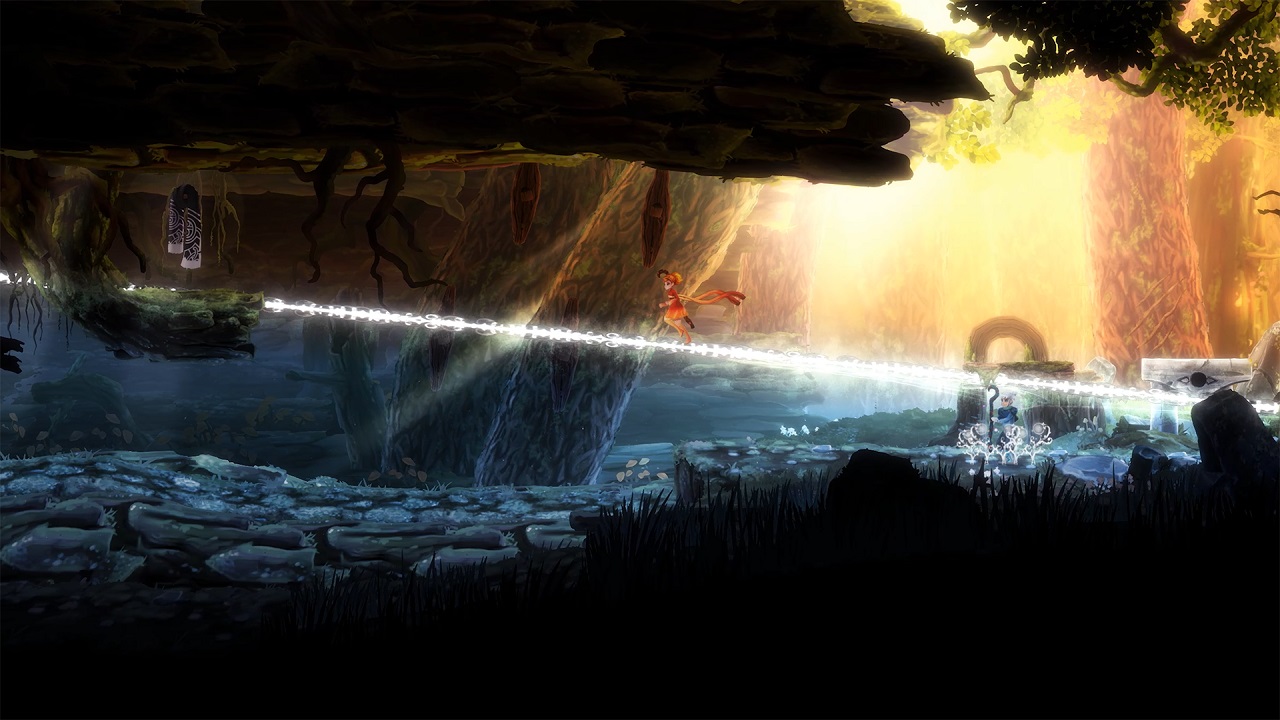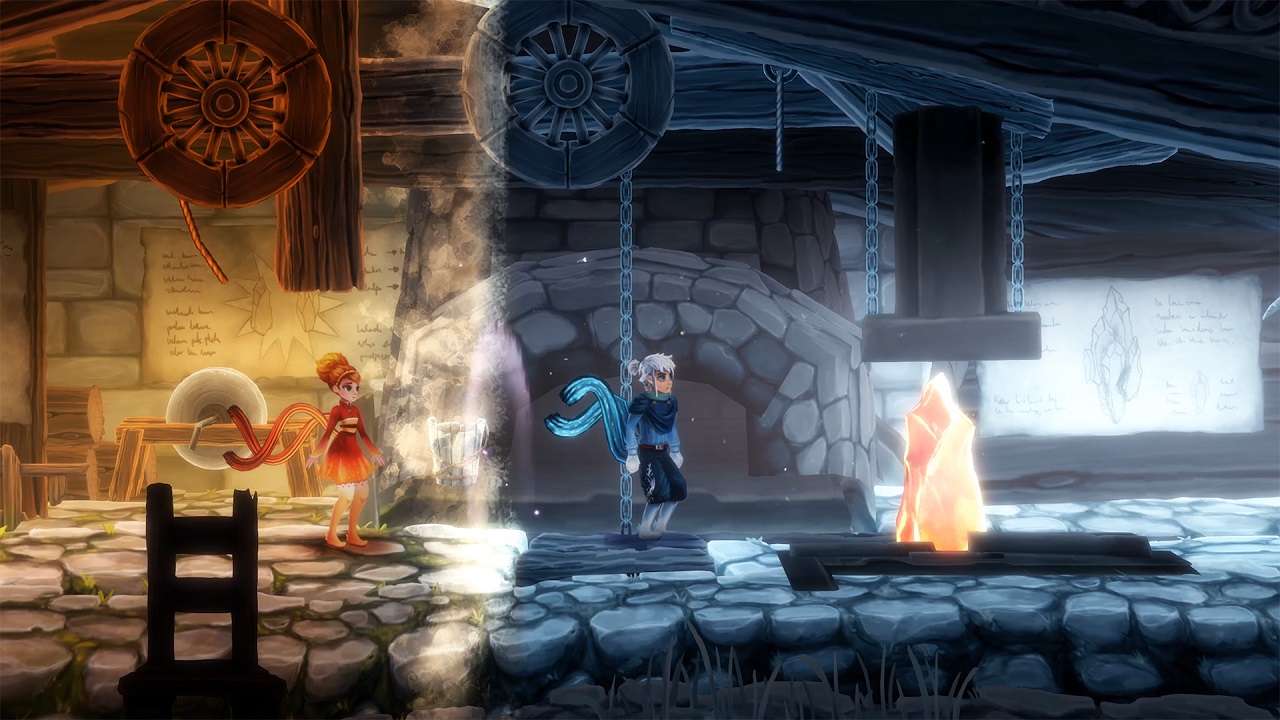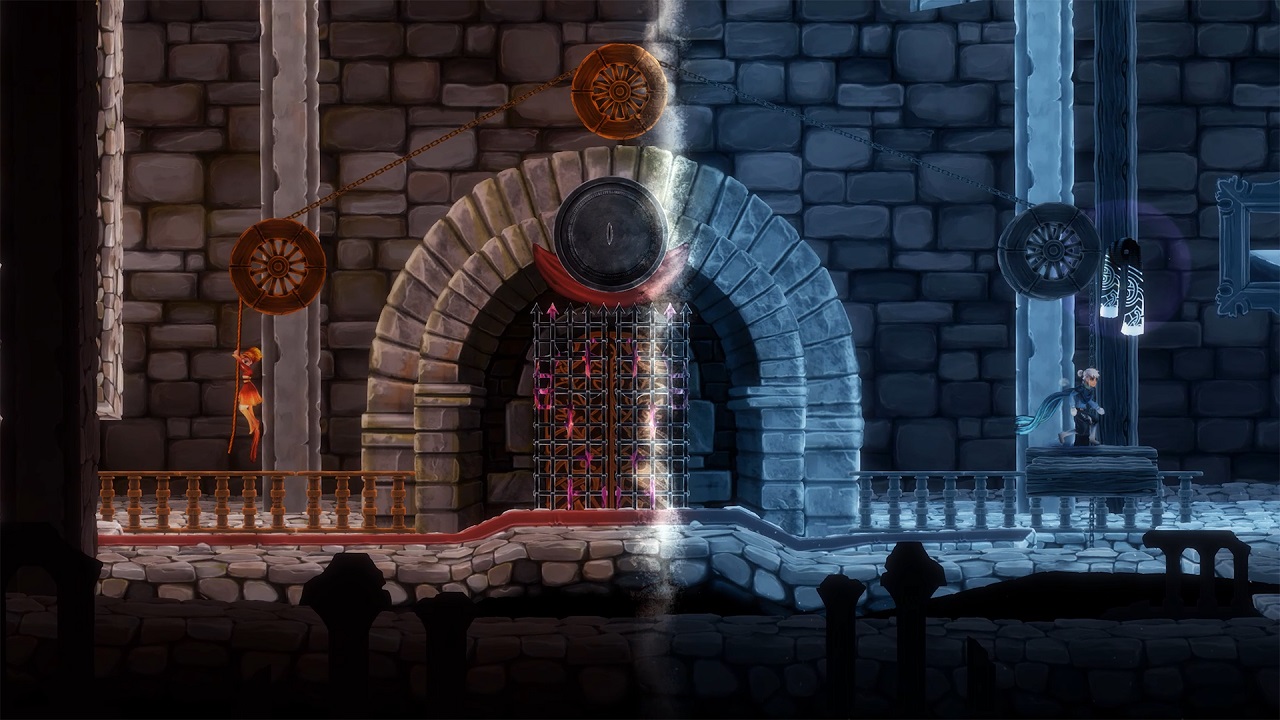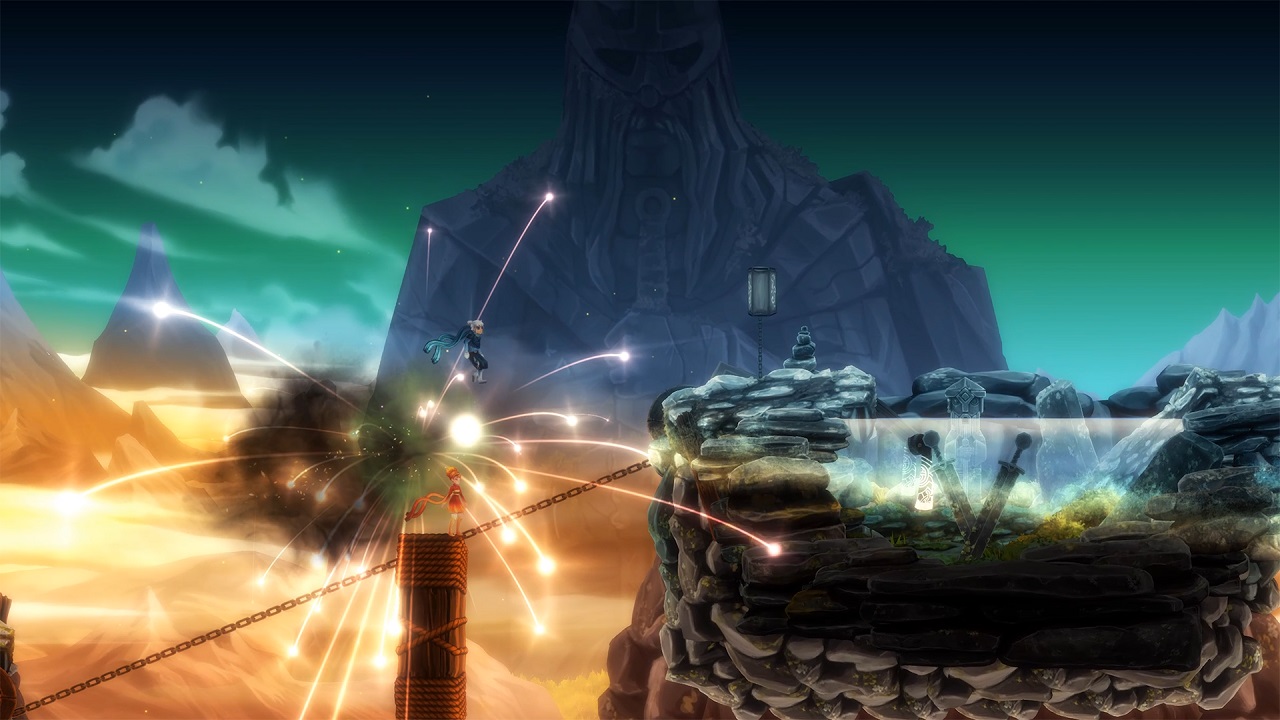Degrees of Separation is a clever title. This game is about two people who occupy the same space but cannot be together, separated by climate. Picture the couple from Pushing Daisies (remember that show?) as if played by the Heat Mizer and Cold Mizer from The Year Without a Santa Claus (surely you remember that show) and you sort of have the premise, here.
So, what does a couple do when they’re on screen together but can’t interact? They solve puzzles, of course! Such is the gameplay in Degrees of Separation, a puzzler/platformer meant to be played alongside someone with whom you have a relationship solid enough to withstand gaming arguments.
The two of you will play as Ember and Rime. Ember comes from a kingdom of warmth and fire, Rime from cold and ice, both kingdom’s seemingly destroyed and abandoned. The two are quickly drawn together in a clash of worlds, only it’s the same world, and they each bring their elements with them. Occupying the screen together, they can change the environment depending upon where they’re standing.
It’s easy to see how this will lead to puzzle solving, right? Say there’s a ledge that both characters must reach, but the area below is filled with water. Rime, cold fellow that he is, can easily turn the water to ice so he can stand upon it and jump to the ledge. Ember cannot, as she melts the ice if she gets too near. So, what to do? That’s up for you and your gaming partner to figure out. In addition to their elemental abilities, each character has specific physical abilities that will help you on your way. Rime is stronger and can lift and move heavier objects, while Ember is more nimble and can reach higher items.
The puzzles are pretty easy to figure out for the most part. “You go here. Stand there. I’ll go here. Now you can reach that. Shove it down here. Cool.” There’s a lot of jumping, climbing, hanging, and pushing, and basic cooperation skills are all need to make your way through the game. New elements are presented to make sure you don’t get too comfortable as you progress, so constant communication with your gaming partner is required. Timing is also important, as some of the more difficult puzzles require you to quickly get to the proper spot after triggering an event.
As you’d expect from a puzzle-platformer, there are bonus items you can grab that aren’t always easy to obtain. First, they can be missed, leading to arguments about when to move on and when to backtrack. Second, accessing the ones you can see is often a challenge, initiating more arguments about when to give up one player’s plan and try the other’s. It’s all in fun, but as I mentioned above, be careful when choosing with whom you’ll play. (Note that you can play Degrees of Separation on your own, moving a character to the right location and then switching to control the other, but it’s much less enjoyable than playing with a partner.)
Thankfully, the game has enough going for it to make the adventure worthwhile despite the inevitable arguments. The most obvious feature is the artwork, which is richly colored and smoothly animated, and offers just enough detail to make these contrasting worlds believable. Second, the story is touching without being treacly, helped along by a narration that keeps you aware of how our heroes are growing together without interfering in that growth. Of course, it helps that their connection with each other presents new game elements to players, so you’re actually growing along with them.
That’s also kind of a drawback, however, as your opinion of the game will largely hinge upon the story of Ember and Rime. If you don’t buy into it, the fire-and-ice puzzle mechanics alone likely won’t be enough to carry you through. And if they do, there’s no incentive to play through the game again once you’ve completed it.
Review: Degrees of Separation (Nintendo Switch)
Good
If you’re looking for a good way to share some quality gaming time with a family member or your significant other, Degrees of Separation is an engaging, colorful way to do it. It’s certainly more productive than binging yet another boring show on Hulu. Some of the puzzles will lead to arguments and frustration, but the laid-back tone of Degrees of Separation will help to smooth that over. The entire experience won’t last long, but most puzzle/platform fans will be happy with the time they shared with it.





